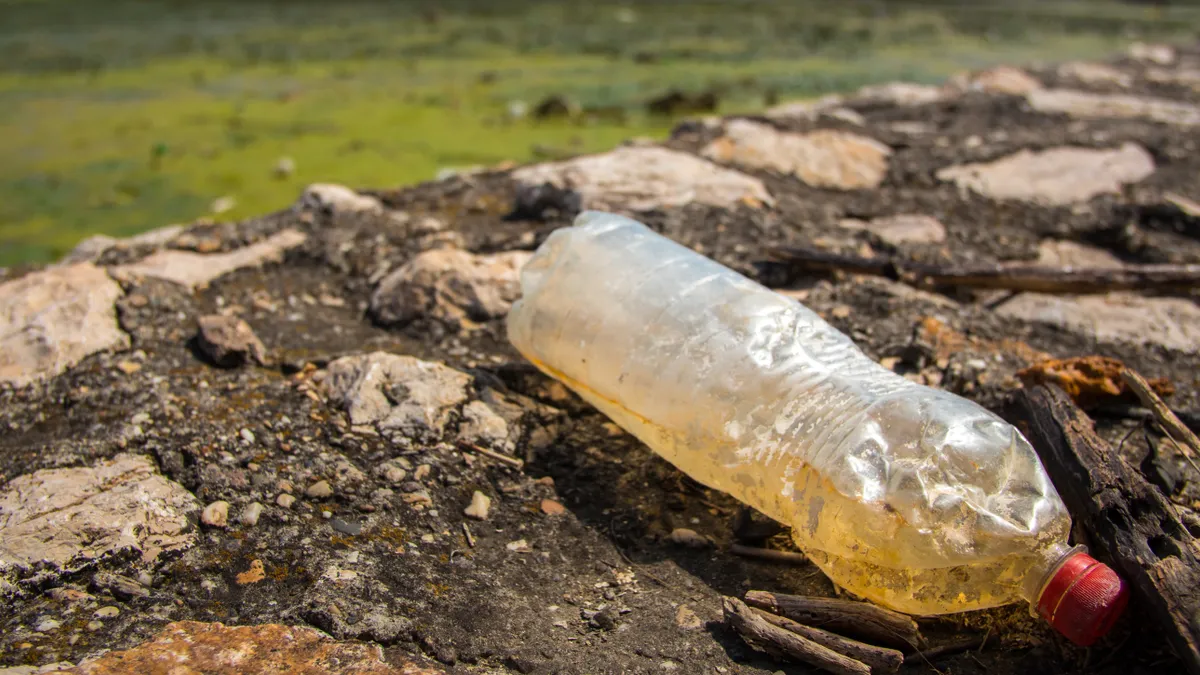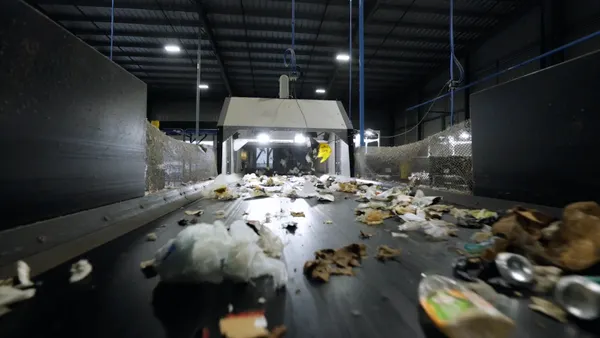The pandemic's impacts on the recycling industry were evident during the annual Paper and Plastics Recycling Conference — both through its virtual format and the frequency with which coronavirus-related discussions seeped into sessions. But speakers said pre-existing factors apart from the pandemic, like the proliferation of brand sustainability commitments and new legislation, will also affect markets for the foreseeable future.
Early pandemic-induced bottle bill program suspensions in the United States significantly cut into the recycled PET (rPET) market by depressing supply. "But at the same time, demand for rPET also fell quite considerably. This was led by, predominantly, cheaper virgin PET being available in the market," said Benjamin Brooks, global lead of recycled plastics at S&P Global Platts. Prices for rPET bales dropped, especially premium bales.
Europe was not as deeply affected by program suspensions because governments there moved more quickly to designate recycling as essential and kept services going, he said. European recyclers did still experience decreased capacity due to social distancing regulations, and commodity prices fell.
Despite pandemic-linked complications, PET remains the most in-demand plastic for fulfilling companies' post-consumer resin commitments, said Hendrik Dullinger, vice president of business development at PreZero U.S. That sector has seen a spike in demand for natural HDPE over the last year.
Dullinger was among the speakers who highlighted ongoing challenges with PET collection that became further exacerbated during the pandemic and led to supply shortages. In some cases, those shortages prompted temporary processing plant closures or line idling. Left unfixed, collection problems could make it difficult to meet growing PET demand to fulfill post-consumer resin (PCR) commitments.
“PET collection rates are stagnating. It’s going to be interesting to see how we can improve the collection of PET in the U.S. to meet that demand,” Dullinger said.
Stakeholders from a variety of points along the value chain speculated that the influx of brand commitments around product recyclability and PCR use will continue after the pandemic, meaning companies won’t let the issue fall to the wayside. Booming consumer attention to recycling and product sustainability will keep brands accountable, speakers said.
“We expect that the brand owners will continue to meet the increased recycled content as advertised,” said Robert Stier, petrochemical analyst at S&P Global Platts.
Plastics-focused legislation is also a factor driving companies toward greater product recyclability and recycled material use in new products.
“Proposed legislation that has come out in Europe and the U.S., both federal and in California, is having an impact on what buyers are thinking. And they’re trying to position themselves in order to meet that legislation, some of which is fast approaching," Brooks said.
California has been a national leader in driving brands toward using recycled content since the passage of SB 270 in 2014. The state banned single-use plastic bag distribution at retail establishments and required reusable plastic bags to have at least 20% PCR content, which increases to 40% this year. Last month, Gov. Gavin Newsom also signed AB 793 into law making California the first state to enact a recycled content requirement for plastic beverage containers, at 15% recycled content by 2022 and 50% by 2030.
"Legislation absolutely plays a big role. ... California introduced the SB 270 regulation around LDPE content, or recycled content, in reusable shopping bags. That really helped us to build our West Coast market. And we hope that similar legislation on the rigids side will follow soon," Dullinger said.
Last month, New Jersey passed a sweeping bill limiting carryout bags, straws and polystyrene foam. At the federal level, Sen. Tom Udall, D-NM, and Rep. Alan Lowenthal, D-Calif., introduced the Break Free From Plastic Pollution Act in February, which would set waste and recycling requirements for a variety of plastic products.
In addition to regulatory drivers, PCR commitments have helped to decouple rPET from virgin PET prices in Europe. That price decoupling first occurred in May 2019 when recycled content became more expensive than virgin and continues presently, even through the pandemic.
“The result is it's not viable anymore for buyers and sellers in the rPET market to be relying on virgin prices to determine their recycled prices,” Brooks said.
Collaboration from all stakeholders across the value chain is important to improve recycling, speakers said. Without buy-in from all parties, MRFs and other processors bear the brunt of trying to adapt to market changes, and it becomes a daunting or insurmountable task.
Collaborative programs and technology upgrades can help MRFs remain viable into the future, speakers said. Specifically, they highlighted the Materials Recovery for the Future initiative, which this summer released a report deeming a year-long pilot program to collect curbside flexible plastic packaging (FPP) products and recycle them at a MRF successful. The pilot proved that proper equipment upgrades can aid flexible packaging separation and achieved four of its five goals, such as improving FPP separation from fiber materials. But at 74%, it fell short of its flexible packaging capture goal of 90%, and end markets for the product are still unproven.
Representatives from Kraft Heinz, Amcor and MRF operator J.P. Mascaro noted the importance of brands, recyclers and other stakeholders working together on solutions to increase plastic collection and recycling rates, product recyclability and the amount of recycled content in items.
Chemical recycling is another emerging technology expected to garner a lot of attention in the coming years. It has received significant cricitism from groups like the Global Alliance for Incinerator Alternatives who maintain the process is largely a plastics-to-fuel technology that includes few of the benefits associated with mechanical recycling. Proponents say chemically breaking down polymers into monomers for reuse in new products could reduce the industry's growing material contamination concerns.
“The good thing about chemical recycling is you can use very low quality PET bottles,” said Yash Lohia, chief sustainability officer at Indorama Ventures. “Today we recycle about 250,000 tons [of PET] mechanically. About 80,000 tons goes back into bottles… Chemical recycling will allow that difference to go back into bottles as well. It’s a process that cleans up the PET bottles in a more efficient format.”
Overall, conference participants said increased attention to recycling over the past decade has been positive for the industry, but greater collaboration is needed for further advancement. They described future collaboration as beneficial for the sector in a number of ways and cited examples like helping to mitigate the effects of climate change.
"I like to think that we are all in this together and you can only solve this crisis when you work across industries and across competitors as well. I’m hoping together with the latest legislative push [this] is what will bring us forward," Dullinger said.


















